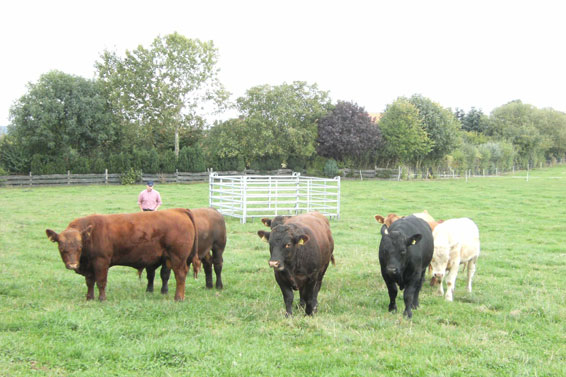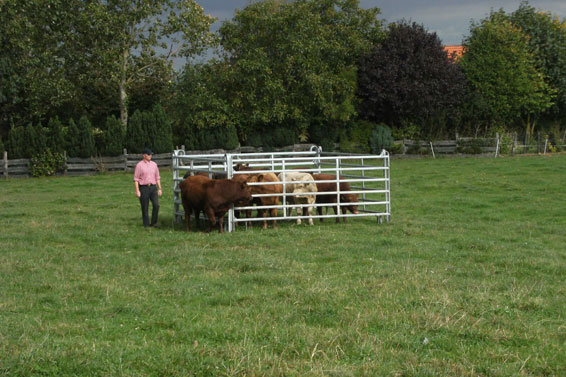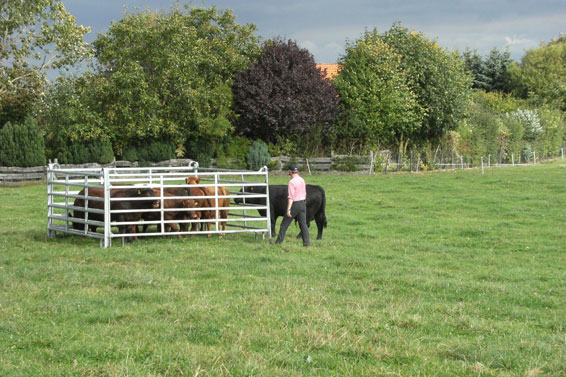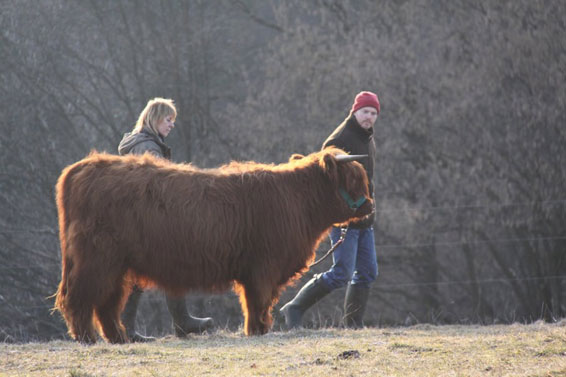Main menu
Safety livestock handling - mother cows, bulls and dairy cattle
Grazing animals are like peaceful herbivore animals, which avoid the danger or can even fly. The difference in the behavior depends on the breed and the spirit of the animal. It is like when on one hand, the two poles of the spectrum are often designate as Limousines and Salers, and Angus and Hereford on the other side.
 Cattle clarify the rank among themselves in the battles, whereby the animals are trying to push away from each other. Horned animals here not use their horns as a thrusting weapon, but in order to avoid slipping off on the rival. But animals without horn also try to push each other away and to leverage the stall. The fights end usually without damage.
Cattle clarify the rank among themselves in the battles, whereby the animals are trying to push away from each other. Horned animals here not use their horns as a thrusting weapon, but in order to avoid slipping off on the rival. But animals without horn also try to push each other away and to leverage the stall. The fights end usually without damage.
The Swiss Eringer breed has a particularly strong competition attitude, with the traditional cow fights. During the Spanish bullfights, the animals are strongly teased to instigate to fight.
Livestock accidents
Nevertheless, the animal husbandry is for cattle especially risky and everyone knows appropriate scarring examples. How does this happen?
 If grazing animals attack and hurt people, they feel so threatened that think they must defend their own lives or their calves. They see themselves in a hopeless situation in which they can only fight to assure their own survival. The survival instinct assumes the control and this peaceful pasture will become an aggressive fighting animal.
If grazing animals attack and hurt people, they feel so threatened that think they must defend their own lives or their calves. They see themselves in a hopeless situation in which they can only fight to assure their own survival. The survival instinct assumes the control and this peaceful pasture will become an aggressive fighting animal.
Such a situation can appear anywhere, both in close conditions as well as on the field. The impression and the threat of not being able to escape are crucial for the animal. Then it turns around and fights. In such a situation, the survival instincts take over the control and Dr. Jekyll become Mr. Hyde.
Safety livestock handling
Such dangerous situations will be avoided by using a low-stress stockmanship. Because stress, panic and attacks from animals do not come out of nowhere, but are noticed ahead of time. The point is to recognize the early signs of stress and panic and take the stress out of the situation in order to avoid the panic. Thus, the low-stress stockmanship decreases the danger in handling the animals, because this method avoids these causes. Low-stress stockmanship is suitable for all grazing animals, especially for cattle: cows, calves, heifers, bullocks and bulls.


What is Stockmanship?
Stockmanship is the most intelligent handling with grazing animals. Stockmanship is the promise that I give to the animals. I promise not to scare them or otherwise to threaten others. I give the animals time they need. In return I get from the animals a peaceful, cooperative partnership and they do what I ask for...